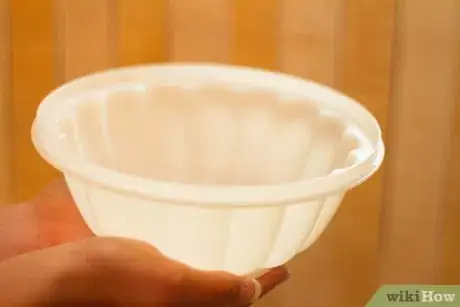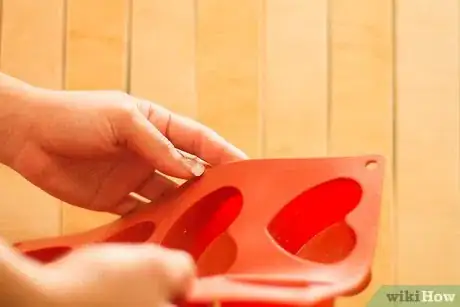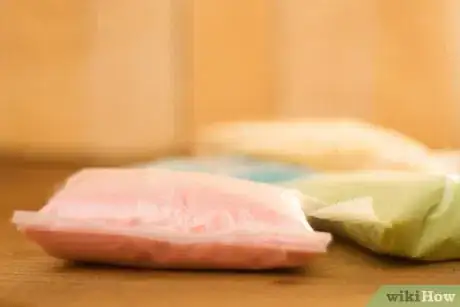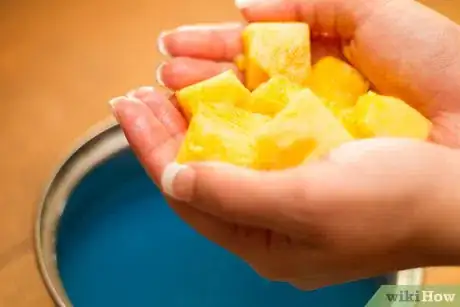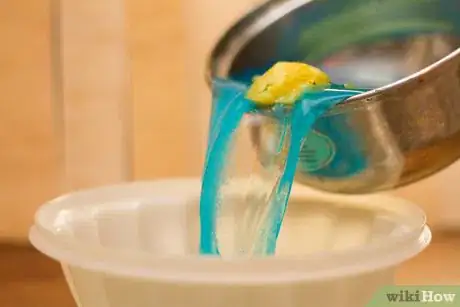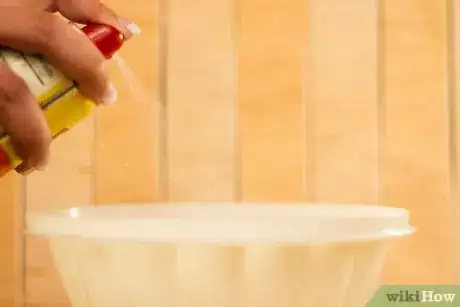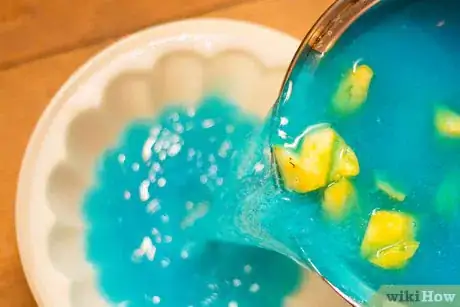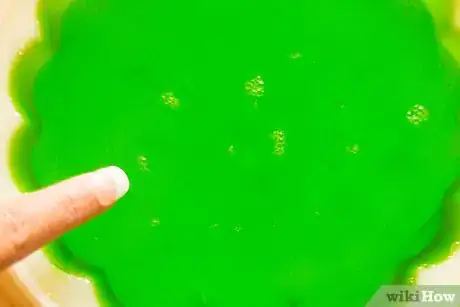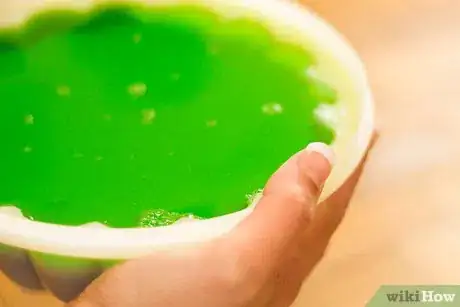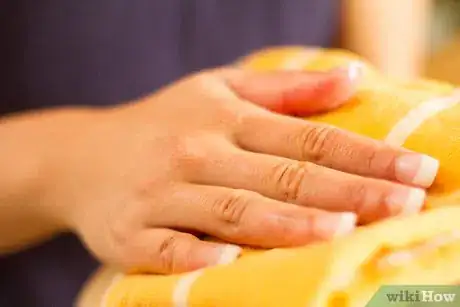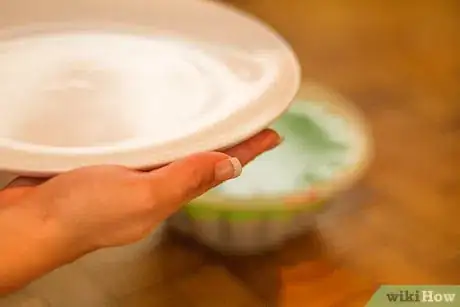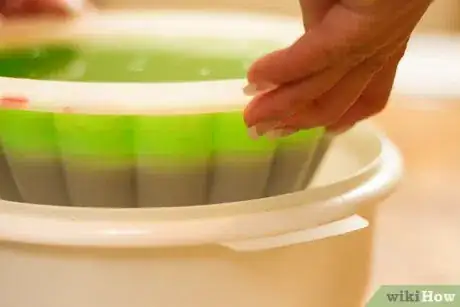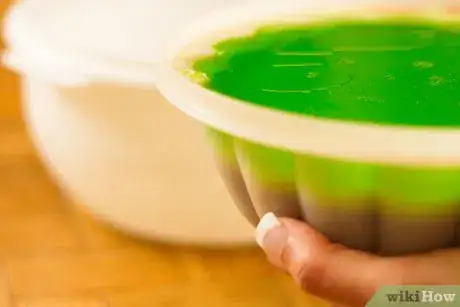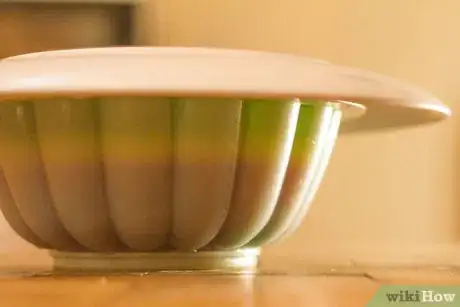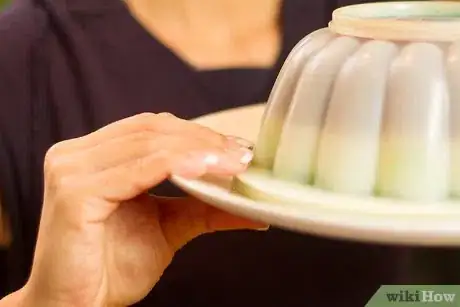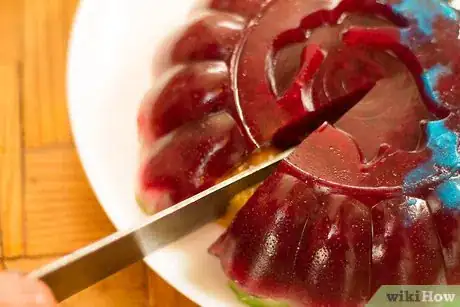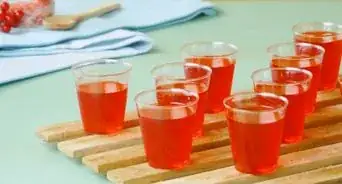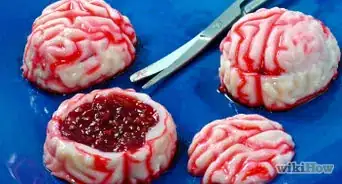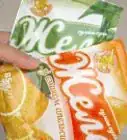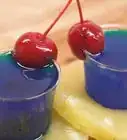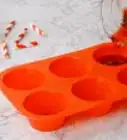wikiHow is a “wiki,” similar to Wikipedia, which means that many of our articles are co-written by multiple authors. To create this article, volunteer authors worked to edit and improve it over time.
This article has been viewed 143,871 times.
Learn more...
The Jello mold is a brightly colored dessert made of sweetened refrigerated gelatin. It is often layered and displayed before serving to show off its smooth, sculpted shape. The gelatin will take the shape of any mold you decide to use; however, in order to make it solidify properly, you will need to ignore the directions on the box in favor of traditional methods.
Ingredients
- 1 1/4 cup (0.3l) boiling water
- 1 6 oz. (170g) box powdered gelatin
- Canned fruit (optional)
- Sour cream (optional)
Steps
Preparing a Mold
-
1Purchase your mold shape. Traditionally, Bundt pans are used to achieve an attractive circular shape. Purchase a non-stick Bundt pan for best results.[1]
-
2Opt for a silicone Jello mold. They are available for purchase on the Internet in holiday shapes, like hearts, Christmas trees and roses.Advertisement
-
3Purchase as many boxes of Jello as colors you would like to be layered in your mold. You will need about five boxes of Jello to fill a standard Bundt pan. You will need one and one-fourth cups of boiling water and a bowl for each color of gelatin.
Mixing Jello
-
1Boil your water. Mix one packet of gelatin with one and one-fourth cup of boiling water. Mix thoroughly with a metal spoon until it has completely dissolved.
- Note that this is less water than indicated on the packet, which will make a firmer mold.
-
2Repeat with remaining colors of Jello in separate bowls. The number of Jello packets needed will depend greatly on the size of your Bundt pan or mold. Buy extra packets to ensure you have enough.[2]
-
3Allow your mixtures of Jello to cool to room temperature. Clear a space in your refrigerator for the next step.
-
4Add two tbsp. (30ml) of sour cream for each color you want to be opaque. Whisk the sour cream into the gelatin.
-
5Add a can of crushed pineapple or other canned fruit to the Jello mixture. Stir well to mix it uniformly.
-
6Pour your cooled Jello into the mold if you want it to be a uniform color. Place it in the refrigerator overnight before removing.
Layering a Jello Mold
-
1Spray the metal or silicone mold with cooking spray.
-
2Pour one mixed bowl of gelatin into the bottom of your pan or mold. Place it in the refrigerator for at least 20 minutes. Remove it when the top is just starting to set and leaves a tight edge against the side of the pan.
-
3Spoon the next color onto the top of the last color. Try a sour cream layer for a big contrast. Place the gelatin in the refrigerator again for at least 20 minutes to let the second layer set.
-
4Remove the gelatin mold. Spoon in the next layer and refrigerate for at least 20 minutes. Repeat spooning and refrigerating until you have used the last of your Jello mixtures.
-
5Place it in the refrigerator to set overnight.[3]
Removing a Jello Mold
-
1Wash your hands. Dry them.
-
2Loosen the edges of the Jello against the pan by pressing your finger lightly against the edges. If you are using a Bundt pan, also loosen the center circle.
-
3Find a platter that is flat. It should be several inches bigger in all directions than your Bundt pan or silicone mold.
-
4Fill a large bowl with warm water.
-
5Immerse the gelatin mold in the bowl of warm water to loosen the edges. Be careful not to get water inside the pan.[4]
-
6Remove it after 15 seconds. Dry off the outside of the pan or silicone mold.
-
7Place the platter face down on the top of the Jello pan or mold. Hold the top of the platter and the top of the mold firmly together between your thumbs and fingers.
-
8Flip the mold so that the platter is face up. You should feel the Jello release from the mold. If it doesn’t release from the pan, flip it back over and stick it in the warm water for a few more seconds before trying again.[5]
-
9Serve the Jello mold by cutting it into slices.
-
10Finished.
Community Q&A
-
QuestionHow do I get it out of a metal pan?
 Community AnswerSpray it with Pam before you put the Jello in it. Once it's set, slide a knife around the edge to break the seal, and invert it on the plate you want to serve it on. Then just let it sit until it drops. You could whack it with a wooden spoon a few times just to get it going.
Community AnswerSpray it with Pam before you put the Jello in it. Once it's set, slide a knife around the edge to break the seal, and invert it on the plate you want to serve it on. Then just let it sit until it drops. You could whack it with a wooden spoon a few times just to get it going. -
QuestionWhen letting the jello solidify over night in the refrigerator, do I put the mold upside down or right side up?
 Community AnswerRight side up, or so the opening of the container is up.
Community AnswerRight side up, or so the opening of the container is up. -
QuestionHow would I get it out of a large cake pan?
 Community AnswerTry putting the cake pan in warm water for a little bit to get the edges to soften up, and then hold the pan upside down and gently shake. The Jello should come out.
Community AnswerTry putting the cake pan in warm water for a little bit to get the edges to soften up, and then hold the pan upside down and gently shake. The Jello should come out.
Things You'll Need
- Bundt pan/Mold
- Cooking spray
- Kettle/microwave
- Spoon
- Bowls
- Whisk
- Warm water
- Platter
References
- ↑ https://www.thekitchn.com/beyond-bundt-cakes-6-things-to-116617
- ↑ https://www.allrecipes.com/recipe/24704/seven-layer-gelatin-salad/
- ↑ https://www.thekitchn.com/how-to-make-a-layered-jello-mold-243630
- ↑ https://www.dreamalittlebigger.com/post/unmold-jello.html
- ↑ https://www.youtube.com/watch?v=Aj0a32y72CI
About This Article
To make a jello mold, start by choosing a mold shape, like a bundt pan, and selecting around 5 gelatin packets. Next, boil 1 and a quarter cups of water, then pour in a gelatin packet and mix until the powder has dissolved. Pour your mixture into a bowl, then, if you want a multi-colored mold, repeat the process with other colors. Once your mixtures have cooled to room temperature, pour one layer into the mold, then place it into the refrigerator for 20 minutes before adding another layer. Finish by refrigerating overnight. To learn how to use sour cream to make a striking opaque layer, keep reading!
